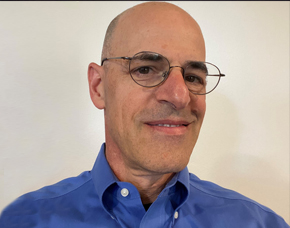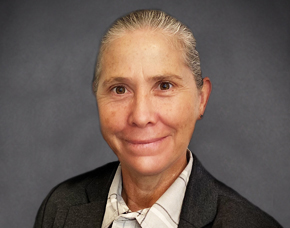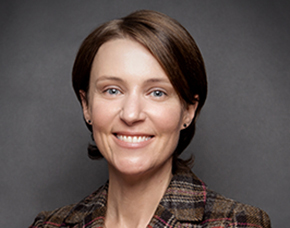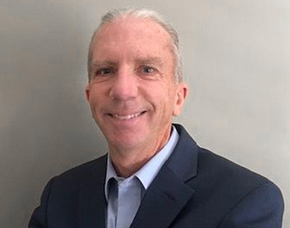NEW YORK – Data-as-a-service firm Taproot Health and several cancer centers are hoping to prospectively collect data on whether precision oncology interventions are improving patient outcomes with a master observational trial they recently launched.
Earlier this month, three National Cancer Institute comprehensive cancer centers and two community cancer practices announced they would share data within Taproot’s Master Registry of Oncology Outcomes Associated to Testing and Treatment (ROOT) trial. The cancer centers are the University of California Moores Cancer Center in San Diego, The Sidney Kimmel Cancer Center at Jefferson Health in Philadelphia, The Knight Cancer Institute at Oregon Health Science University in Portland, Oregon, Utah Cancer Specialists in Salt Lake City, and Teton Cancer Institute in Idaho Falls, Idaho.
“Right now, there isn’t a methodology that allows precision medicine to advance in real time,” said Taproot Health CEO Dane Dickson. There are databases, such as CancerLinQ, and data-sharing collaborations among cancer centers, such as the Oncology Research Information Exchange Network (ORIEN), all with the aim to improve precision cancer care.
But CancerLinQ, for example, has very little structured data from the molecular testing patients received making it difficult to advance learnings in this regard. Participating cancer centers in ORIEN, meanwhile, have agreed to treat patients under a common protocol, collect samples for genomic sequencing when possible and study the molecular profile of a patient’s cancer, follow them longitudinally, and share data. But Dickson said that what’s missing from the field is a national effort where the focus is on gathering prospective outcomes data in a standardized fashion in real time.
In a Cell paper published last week, experts from Taproot and several of the collaborating cancer centers described the design of the ROOT trial, which incorporates elements of interventional trials and real-world data but aims to answer questions that these present methods cannot. For example, current gold standard interventional trials that incorporate molecular testing attempt to adjust for bias through randomization, stringent patient inclusion and exclusion criteria, standardized testing methods, and fixed data collecting
methods.
However, often these carefully designed trials don’t capture how patients are really receiving treatments at cancer centers and local clinics, and by the time these studies are finished, the standard of care may have shifted. In current interventional trials, “we take snapshots of individual patients,” said Dickson. “How did this group of patients do this one time?”
A more recent trend has been the use of real-world data to try to address some of the limitations of traditional trials, but real-world data has its own set of challenges. Most real-world data collections are on the other end of the spectrum to controlled interventional trials, where due to the uncontrolled nature of this information, there are more opportunities for bias. “Patients can receive any treatment, [recorded] using any reporting style, and any measuring metric … it’s all retrospective for the most part and you don’t have standards on how the testing was done or reported or how response was determined,” Dickson said. “You don’t have consent given by patients to recontact them for more information.”
Some of the most essential data elements necessary for precision oncology — the results from molecular testing — are often unavailable in electronic medical records or hard to get at, buried in a PDF or in physicians’ notes. But if the question ultimately in healthcare research is to identify the approaches that are
benefiting patients, that may be particularly hard to glean from real world data.
Physicians’ notes are not standardized or structured, for example, making it hard to extract detailed information about how a patient fared on a precision oncology drug. “A patient may come in with significant progression on a therapy, but the chart may say that generally the patient is doing well,” Dickson said. “Or a patient may be responding to treatment, and the physician may still record it as the patient is generally doing well.”
Within the master observational trial, Taproot is trying to find a middle ground, where data is collected prospectively, where patients give consent that allows researchers to recontact them for information, and where certain fixed data elements are standardized and stored in a structured format. “We’re not trying to fix everything like in a traditional interventional clinical trial,” said Dickson, “but let’s fix things that are most important.”
The ROOT trial is also different from current basket and umbrella trials, where patients receive molecular testing and then are put on specific drugs that may be able to target a certain biomarker. “We’re kind of going in the opposite direction here,” said Jennifer Johnson, director of precision medicine at Thomas Jefferson University Hospital and a principal investigator for the trial. “We’re collecting data from all these patients, who are in the community and in academic centers … and we’re bringing all of their molecular data back together again to create new learning opportunities.”
For example, the trial doesn’t restrict which drugs and tests patients can receive at the participating cancer centers. However, the trial does standardize what data is collected on these interventions. “How do we report testing, how do we report treatments, how do we report response rates? All those things are fixed,” said Dickson.
Moreover, it’s increasingly becoming clear that precision approaches will not just involve genomics, but other types of omics data gleaned from tissue, blood, and other sample types. ROOT was designed to identify these emerging approaches in precision oncology.
The idea behind ROOT isn’t to take a known oncogenic marker and study it in another tumor type as existing basket trials are doing, Johnson explained. “We want to know what else is out there,” she said. “What about patterns of genetic changes? What about proteomics, epigenomics, and transcriptomics? We’re just going to get more and more data and we want to have a repository of data that people can design the next level of treatment trials from.”
The initial cancer centers collaborating at this launch phase of the ROOT trial have all agreed to the same memorandum of understanding regarding data access and submissions. Across the five cancer centers and clinics, more than 1,500 oncologists will be able to submit data to the registry if they choose,
according to Rebecca Owens, chief commercial officer at Taproot.
If they do, then Owens expects the data in the registry will accrue quickly. However, it is time consuming to submit standardized data of the type Taproot wants to collect. To address this, the participating cancer centers have agreed to submit a streamlined set of core data elements that include things like demographics and medical history, the key features of the cancer of interest at diagnosis, and the treatments and outcomes for each cancer episode.
Taproot and the collaborators decided on the data elements keeping in mind that community clinics have historically not been able to partake in these types of efforts because they don’t have the research staffs of large comprehensive cancer centers. Still, community practices undoubtedly have a lot to contribute to research since more than 80 percent of cancer patients are seen in local clinics. “This brings academic and community practices together in sharing data,” said Randy Erickson, CEO of Utah Cancer Specialists, one of the community practices submitting to ROOT.
However, he acknowledged that physicians are unlikely to participate if the time it takes to submit data cuts into their already limited time with patients. To avoid putting too heavy a burden on physicians with this trial, the collaborators have tried to align the submission process with physician workflows and agreed that oncologists will only have to record their medical decisions and patients’ outcomes, while their staff can collect and record the other data elements like demographics and which treatments patients received.
Within the trial, data submitters will receive less than fair market value for collecting data elements, which may help encourage data submissions without being cost prohibitive for the registry. “In order to move precision oncology, you need high quantities of real-world data tied with molecular data,” Erickson said. “And if we can get more practices participating in this, it could be a big step moving forward.”
Currently, Taproot is self funded, but Dickson said he is attending the JP Morgan Healthcare Conference this week in search of the right financing partners. “In order for Taproot Health to stay independent of all the stakeholders in medicine, we have not sought outside funding as of yet,” he said. “Potential partners must maintain our commitment to transparency, data and revenue sharing, collecting prospective regulatory data at scale, and above all, patient privacy.”
In building a data-sharing effort like this, Dickson was well aware that there may be competing monetary interests at play. Historically, drugmakers and healthcare systems have treated healthcare data as a commodity and haven’t wanted to part with it easily for competitive reasons.
Participating institutions submitting data within ROOT will receive the same access to deidentified data, but non-participating research institutions would have to pay a fee and may have more limited access. If a commercial group wants access to the collected information within the registry, they will also have to pay a licensing fee, the revenue from which will be shared among submitting institutions based on the quality and quantity of data deposited.
With the ROOT trial “we’re trying to build a tide that will lift all ships,” by collecting pre-competitive data useful to all stakeholders that tend to work in silos, Dickson said. “We need to treat people like partners.”
Before Taproot, Dickson had started another firm called MED-C (which later changed its name to CureOne) and had made some headway in building a precision oncology-focused registry with very similar aims. In response to payor demands that they needed more data on the impact of NGS in cancer care, CureOne launched the prospective, open-access N1 Registry to collect this data. NGS test providers, Foundation Medicine and Guardant Health, had agreed to partake, and Washington University in St. Louis had signed on to enroll patients into the registry.
When the Centers for Medicare & Medicaid Services issued a draft national coverage determination in 2017 for NGS testing to guide advanced cancer treatment, it featured a path for coverage for labs under an evidence development scheme. CureOne’s N1 Registry looked ideally positioned to collect this data at the time. However, in its final decision, CMS nixed the coverage with evidence development proposal, because many stakeholders complained that the data submission criteria into the registry was too onerous.
Although this “took away CureOne’s entire business premise,” Dickson now believes that perhaps this was for the best, since in that model people would have participated because it was required by CMS. But, with Taproot he is optimistic that participation will grow more organically, out of a desire to access the types of data that can improve cancer care and help patients. “The motivation now isn’t to satisfy a payor but to advance science,” Dickson said. “As a side benefit, we’re also hoping [this model] will help bolster revenues for clinics that have been struggling to do research like this.”
Currently in healthcare, particularly in precision oncology, everyone seems to be after large quantities of data to home in on small subsets of patients. Drugmakers are looking outside of traditional clinical trials to gain insights into drugs that might work for increasingly smaller patient populations. Labs and testing companies are tracking the biomarkers they detect on patients but have limited insight into how that testing is impacting outcomes in specific indications, which they need in order to improve reimbursement intake from payors. Major cancer centers need information on which tests and drugs are best for their patients and which clinical trials match their molecular profiles.
While Dickson hopes that all these stakeholders see the value in partaking in a national precision oncology registry like ROOT, he acknowledged it’s too early to know whether it will attract more collaborators. “We see a large gap in this space, and we see a great need for this,” he said.
“We know that there is interest in this data,” Owens added. “We’re situated to collect that data.”








